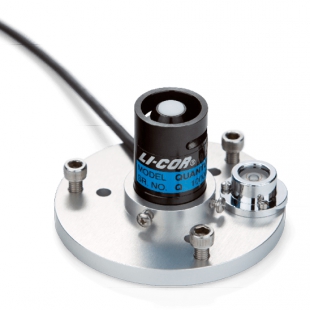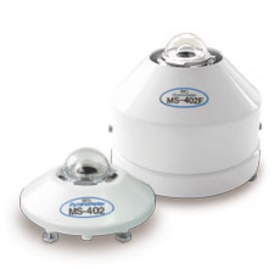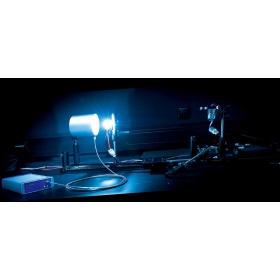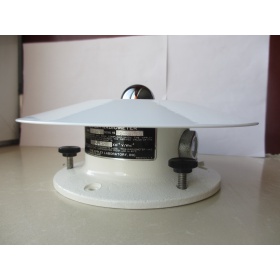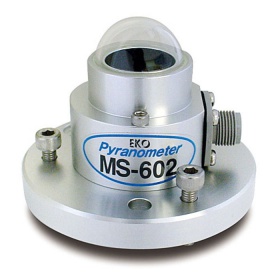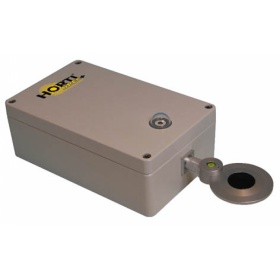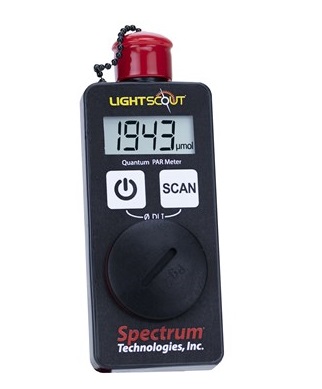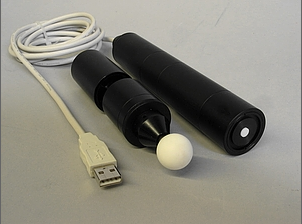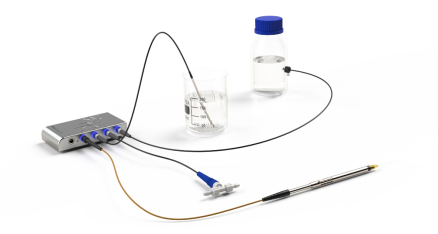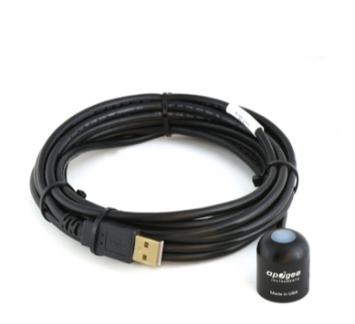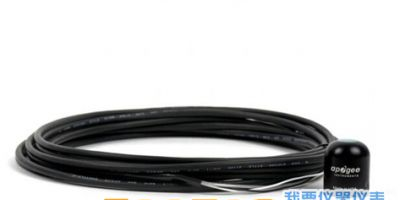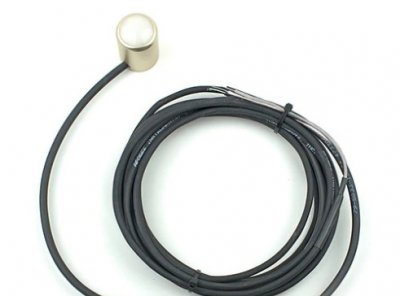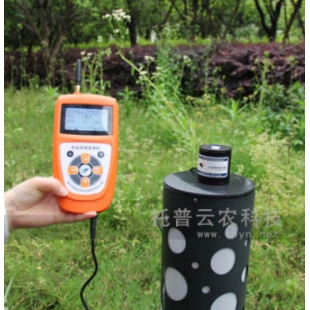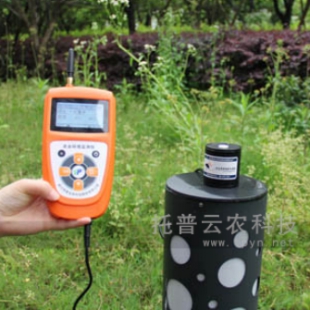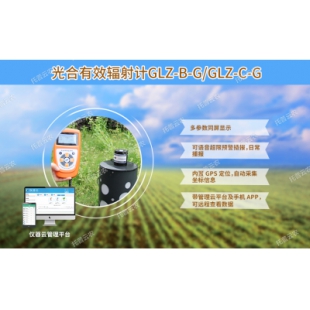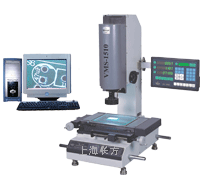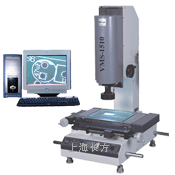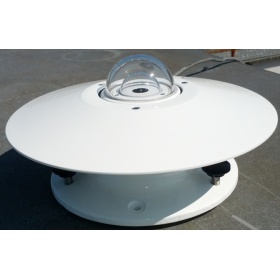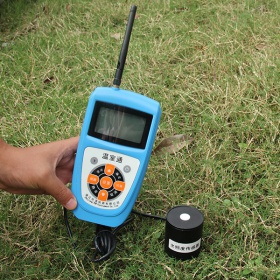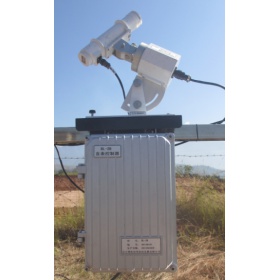-
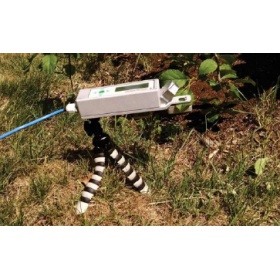
-
澳作Y(II)光量子产额测量仪
- 品牌:北京澳作
- 型号: optic
- 产地:美国
- 供应商报价: 面议
-
北京澳作生态仪器有限公司

-
企业性质
入驻年限第10年
营业执照
- 同类产品叶绿素仪荧光仪(1件)
-
为您推荐
- 详细介绍
应用
Y(II)或ΔF/FM’ 或 (FM’ FS )/FM’) 是经受时间考验的光适应测量参数,比FV/FM对更多类型的植物胁迫更加敏感。已有的大量证据表明FV/FM对许多种植物胁迫和健康植物的光系统II的测量十分出色,而Y(II)或光量子产额则可测量实际光照下光适应环境和生理状况的光系统II的效率。
原理.jpg)
采用调制饱和脉冲原理,测量植物的叶绿素荧光,通过相关文献的研究成果,计算植物的光量子产额及相对电子传递速率,同时可测量PAR、叶温、相对湿度等环境参数。
特点
叶片吸收测量:提供叶片吸收测量及随环境变化导致的叶片吸收变化。根据Eichelman (2004) 叶片吸收在健康植物的变化范围在0.7~0.9 之间。因此,为获得准确的ETR或“J”,Y(II)测量仪提供了一个可靠的测量方法,
FV/FM测量单元:可额外选配FV/FM测量仪,用于暗适应测量。.jpg)
具有暗适应叶夹
阳光下屏幕可见
图形显示FV/FM曲线
2GB存储空间
USB通讯
数据Excel查看
先进的PAR叶夹:采用底部叶夹打开装置,防止测量时误操作打开叶夹。对传感器进行余弦校正,确保叶片相对测量光的角度不变。.jpg)
FM’校正:对于具有高光照强度历史的植物,完全关闭光反应中心是一个问题,Y(II)测量仪使用Loriaux &Genty 2013的方法进行FM’校正,确保误差最小。
测量植物叶片的吸收:能够直接测量植物叶片的吸收,而不是使用平均值0.84计算ETR。
自动调制光设定:快速准确自动的调整合适的调制光强,避免人工操作的误差。
先进算法避免饱和脉冲NPQ:采用25ms内8点的平均值确定FM’,消除饱和脉冲NPQ的影响。
更精确的叶温测量:采用非接触式红外测量,测量精度可达±0.5℃。
直接测量相对湿度:含有测量气体交换使用的固态传感器,可测量相对湿度。
降低叶片遮挡的设计:倾斜的角度减少对叶片的遮挡,可以测量拟南芥等小叶。
系统组成.jpg)
标配:
Y(II)光量子产额测量仪、充电器、USB电缆、便携箱、2个吸收测量单元、U盘(包含说明书)。
可选:
FV/FM测量仪及10个暗适应叶夹、三脚架。
技术指标
测量参数:
Y(II)或ΔF/Fm‘、ETR、PAR、T、FMS或FM’、Fs、α(叶片吸收&叶片透射)。
监测模式:可使用电脑,长时间监测Y(II)、ETR、叶片吸收、PAR、叶温、相对湿度、及NPQ。
相对湿度:5%~95%,±2%。
可使用AC或USB供电,可配三脚架。
技术参数:
光源
饱和脉冲:白色LED具有PAR时7000μmols
调制光:红色LED 660nm,具有690nm短波过滤。
光化光源:仅可使用外部光源
检测方法:调制脉冲法
检测器&过滤器:具有700~750nm带通过滤的PIN光电二极管
取样速率:1~10000点/秒自动切换。
测量时间:3s或长期监测
存储空间:2GB
输出:USB
尺寸:便携箱尺寸为14”x 11”x 6”,仪器为9’’长
质量:Y(II) 测量仪0.45 kg
FV/FM测量仪0.36 kg.
总重1.95 kg.
产地:美国
文献
Adams & Demming-Adams 2004 Chlorophyll Fluorescence as a tool to Monitor Plant Response to the Environment. William W. Adams III and Barbara Demmig-Adams, From Chapter 22, “Chlorophyll a Fluorescence a Signature of Photosynthesis”, edited by George Papaqeorgiou and Govindjee, published by Springer 2004, PO Box 17, 3300 AA Dordrecht, The Netherlands, pages 598 -599
Adams WW III, Demmig-Adams B. (1994) Carotenoid composition and down regulation of Photosystem II in three conifer species during the winter. Physiol Plant 92: 451-458
Ball MC. (1994) The role of photoinhibition during seed领 establishment at low temperatures. In: Baker NR. And Bowyer JR. (eds) Photoinhibition of Photosynthesis. From Molecular Mechanisms to the Field, pp365-3376 Bios Scientific Publishers, Oxford
Ball MC., Butterworth JA., Roden JS., Christian R., Egerton JJG., (1995) Applications of chlorophyll fluorescence to forest ecology. Aust. J. Plant Physiology 22: 311-319
Baker N.R, Rosenquist E. (2004) Applications of chlorophyll fluorescence can improve crop production strategies: an examination of future possibilities, Bukhov & Carpentier 2004 Effects of Water Stress on the Photosynthetic Efficiency of Plants, Bukhov NG., & Robert Carpentier, From Chapter 24, “Chlorophyll a Fluorescence a Signature of Photosynthesis”, edited by George
Papaqeorgiou and Govindjee, published by Springer 2004, PO Box 17, 3300 AA Dordrecht, The Netherlands, page 627-628 Burke J. (2007) Evaluation of Source Leaf Responses to Water-Deficit Stresses in Cotton Using a Novel Stress Bioassay, Plant Physiology, Jan. 2007, Vol 143, pp108-121
Burke J., Franks C.D. Burow G., Xin Z. (2010) Selection system for the Stay-Green Drought Tolerance Trait in Sorghum Germplasm, Agronomy Journal 102:1118-1122 May 2010
Cavender-Bares J. & Fakhri A. Bazzaz 2004 “From Leaves to Ecosystem: Using Chlorophyll Fluorescence to Assess Photosynthesis and Plant Function in Ecological Studies”. Jeannine Cavender Bares, Fakhri A. Bazzaz, From Chapter 29, “Chlorophyll a Fluorescence a Signature of Photosynthesis”, edited by George Papaqeorgiou and Govindjee, published by Springer 2004, PO Box 17, 3300 AA Dordrecht, The Netherlands, page 746-747 ETR Drought stress and npq
Cazzaniga S, Osto L.D., Kong S-G., Wada M., Bassi R., (2013) “Interaction between avoidance of photon absorption, excess energy dissipation and zeaxanthin synthesis against photo oxidative stress in Arabidopsis”, The Plant Journal, Volume 76, Issue 4, pages568579, November 2013 DOI: 10.1111/tpj.12314
Cheng L., Fuchigami L., Breen P., (2001) “The relationship between photosystem II efficiency and quantum yield for CO2 assimilation is not affected by nitrogen content in apple leaves.”
Adams WW III, Demmig-Adams B., Vernhoeven AS., and Barker DH., (1995) Photoinhibition during winter stress Involvement of sustained xanthophyll cycle-dependent energy-dissipation. Aust J. Plant Physiol 22: 261-276 Journal of Experimental Botany, 55(403):1607-1621
Journal of Experimental Botany, 52(362):1865-1872Crafts-Brandner S. J., Law R.D. (2000) Effects of heat stress on the inhibition and recovery of ribulase-1, 5- biphsphate carboxylase/ oxygenase activation state. Planta (2000) 212: 67-74
all’Osto L, Cazzaniga S, Wada M, Bassi R. (2014) On the origin of a slowly reversible fluorescence decay component in the Arabidopsis npq4 mutant. Phil. Trans. R. Soc. B 369: 20130221.http://dx.doi.org/10.1098/rstb.2013.0221
da Silva J. A. & Arrabaca M.C. (2008).Physiologia Plantarum Volume 121 Issue 3, Pages 409 420 2008
Eichelman H., Oja V., Rasulov B., Padu E., Bichele I., Pettai H., Niinemets O., Laisk A. (2004) Development of Leaf Photosynthetic Parameters in Betual pendula Roth Leaves: Correlation with Photosystem I Density, Plant Biology 6 (2004):307-318
………………
更多文献请来电查询!



